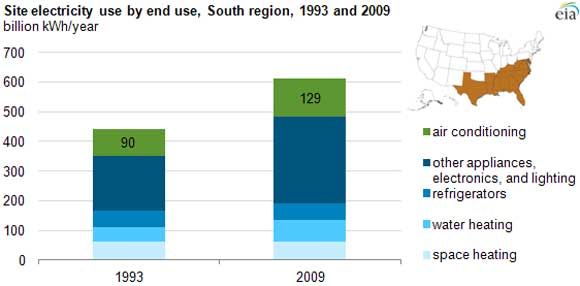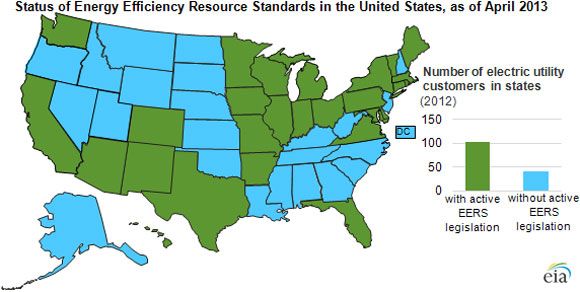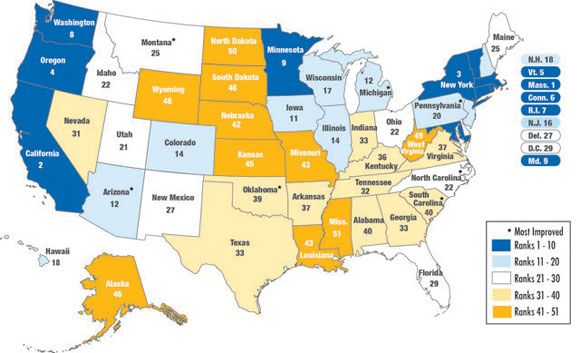Air conditioning is only growing more popular across the U.S. -- and the world, but in the U.S., it’s growing fastest in the South.
The amount of electricity used for AC has increased 43 percent in the past twenty years and now accounts for one-fifth of all of the electricity consumed in the region, according to the U.S. Energy Information Administration.

Part of that is just the sheer rate of growth; the South added more housing units than other parts of the U.S. during the time period in question, and most of the new units were equipped with central air. Although newer central air conditioners are more efficient than predecessors, the move to central AC from single-room AC means that more areas of the home are being cooled. As a result, nearly double the amount of energy is used compared to homes that only employ room units.
Not only do the new homes tend to have central air, but they are also larger. Home size has increased in the past twenty years across America, but even more so in the South, where typical residential units are 9 percent larger, compared to a nationwide average of 5 percent.
The South also outstrips the rest of the country in home energy use. In most of the U.S., home energy use is relatively flat due to increased energy efficiency in appliances, even though houses are bigger and more electronics are in use. But in the South, energy use per home is growing, according to the EIA.

Although the South has growing demand for summer electricity, the Deep South is relatively devoid of energy-efficiency resource standards compared to the rest of the country. The American Council for an Energy-Efficient Economy puts most of the South in the bottom half of its energy efficiency scorecard. Some states are considering energy efficiency standards, but for much of the region, the cost of electricity is low and there is plenty of generation to meet demand.
Residential demand response also isn’t getting a makeover the way it is in many other regions. Florida Power & Light, for instance, has a robust grid modernization program that includes smart meters, but it still relies on its old-school load control program that connects to about 900,000 devices, mostly air conditioners. Although FPL looked at critical peak rates and smart thermostat in various pilots, nothing really made sense for customers, who pay relatively low rates.

Although the South may seem content to drive up use with its AC habit, that could change in coming years. Some Southern states are considering energy-efficiency resource standards, and the Southwest, which was also an efficiency laggard in past years, has significantly improved, according to the ACEEE.
One state that doesn’t have the liberty of sitting back and cranking up the AC is Texas, which already suffers from slim electricity reserve margins and high peaks. But between aggressive plans for PACE programs and coming changes to the energy market, Texas could see a significant swing in its energy efficiency standing in coming years.



